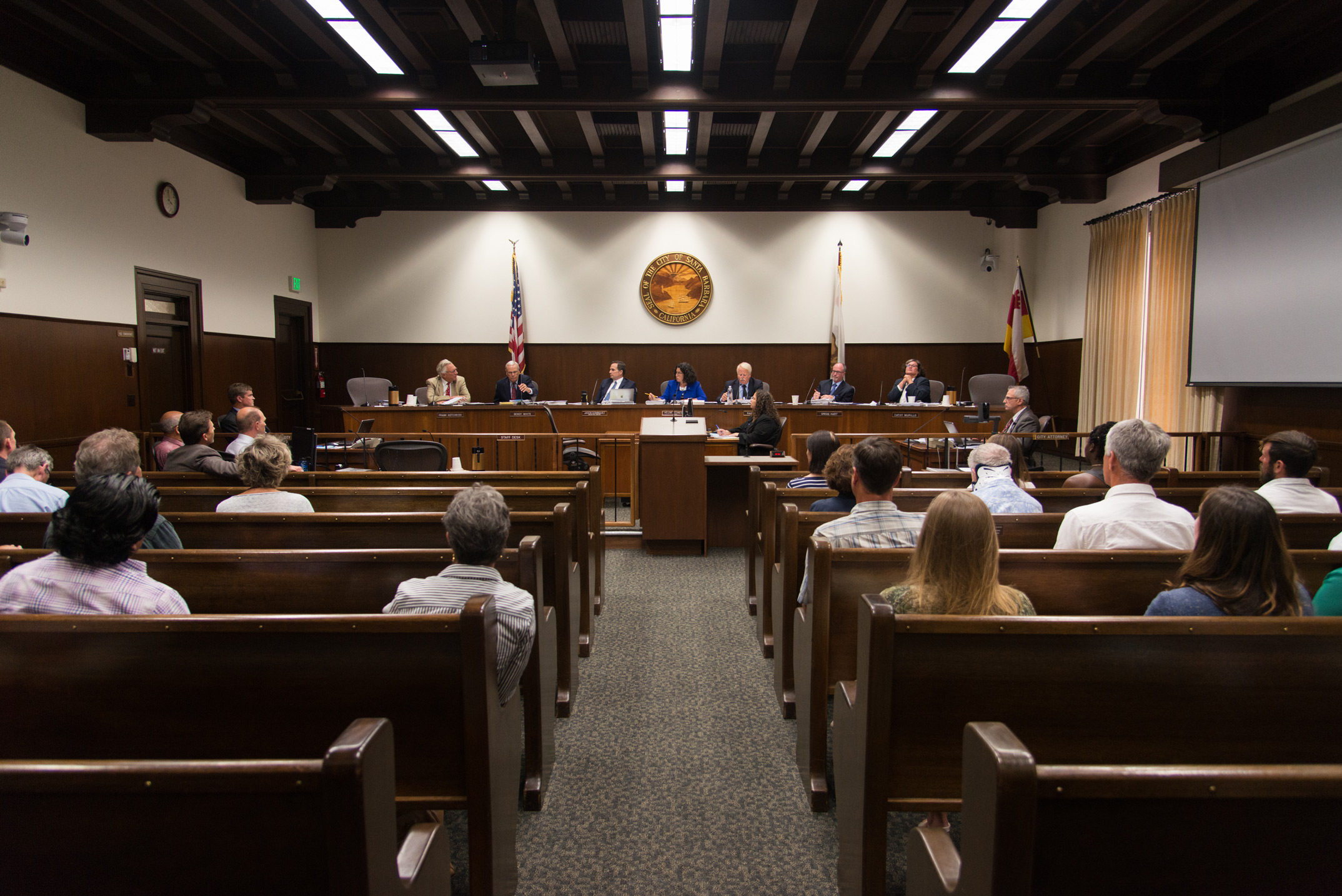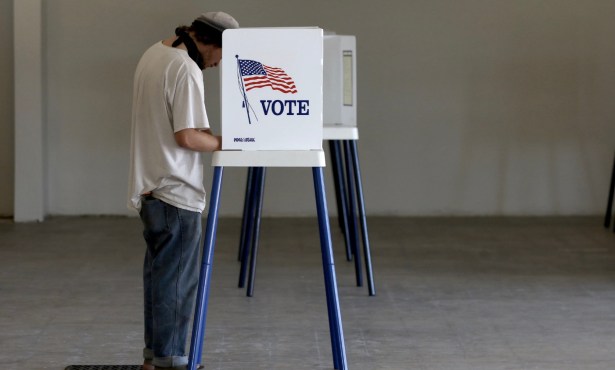Santa Barbara City Council Continues to Act Like Stumbling Drunk
A Case Study in Why Councilmembers and the Administrator Don’t Fix the City’s Problems

Someone famously dead, white, and male compared the crafting of new laws to the making of sausage; neither, he warned, should be observed by the faint of heart. He also described politics as “the art of the possible.” Based on the acrimoniously paralytic performance by the Santa Barbara City Council this Tuesday evening, I’d say he got it only half right. After sitting through about three hours of council debate, I don’t know what, if anything, is possible. But I sure wouldn’t eat the sausage.
At issue — on the subliminal macro level — was how to bring State Street back from the dead. On the micro level, however, it was all about a sudden, unannounced policy shift by the Santa Barbara Police Department to limit the hours that new downtown restaurants can sell liquors, both hard and soft. Police Chief Lori Luhnow has become concerned Santa Barbara has become so awash in new bars, breweries, tasting rooms, artisanal distilleries, and booze-infused barbershops that her officers no longer have the resources to respond safely.
Caught in the crossfire between the macro and the micro is the fierce and formidable restaurateur Tina Takaya, who is trying to open a new, chichi sushi bar on Cabrillo Boulevard. Takaya — who also owns the high-end, highly successful Opal restaurant next to the Arlington — is fighting back. She’d spent $240,000 on a new liquor license for her new restaurant, Oku, with the full expectation that that license allowed her to serve liquor until 2 a.m. Takaya was shocked to learn — with no warning — she’d need to shut down at midnight instead. This change, she estimated, would cost her $250,000 a year in revenues. This info, she said, came courtesy of Anthony Wagner, Chief Luhnow’s resident seeing-eye guard dog and licensing czar. Takaya’s been knocking loudly on councilmembers’ doors ever since. That’s how the issue got to the council this Tuesday.
Wagner, a big-brain policy wonk endowed with a pugnacious swagger, wasn’t backing down. He buried councilmembers in such alarming liquor stats that I feared for the liver of every man, woman and child ever conceived in Santa Barbara. Santa Barbara, he said, has 617 liquor licenses within city limits, ranking it first among California’s 482 cities. Based on state standards, he said, Santa Barbara is “over-saturated” with 200 to 300 percent more booze dispensaries than the state’s Alcohol Beverage Control guidelines suggests is acceptable for a population our size. These establishments, he said, accounted for nearly 15 percent of the 88,000 calls for service the department receives. Assuming each response requires two cops for about 40 minutes, that’s $285 a call. Although calls for service are actually dropping — by 9,000, in fact, over the past three years — Wagner said the number of aggravated assaults has gone up sharply, from 152 in 2016 to 209 for the first nine months of 2018. The epicenter for all this mayhem, he said, is in the drunk-and-disorderly zone on State Street between Haley and Ortega.
What these stats have to do with Takaya’s new restaurant is hard to imagine. Her staid customer base of well-heeled Santa Barbara denizens, I bet, hasn’t accounted for even one of the aggravated assaults worrying Chief Luhnow. And Takaya’s proposed sushi bar is well off State Street, safely beyond the glow of the drunk-and-disorderly zone.
Even more befuddling is why they would propose this change at a time when State Street is facing an unprecedented number of empty buildings. Merchants and property owners have been making a pretty good case for blaming this high vacancy rate on City Hall’s own intoxication with its regulatory authority. Though this critique conspicuously fails to acknowledge the damage inflicted by greedy and indifferent landlords, they have a point. Now is decidedly not the time to propose new hurdles for downtown businesses to jump.
By law, the council lacks the legal authority to tell Luhnow and Wagner to take a chill pill and go back to the old policy of hashing out hours of operation on a case-by-case basis with the applicants. But City Administrator Paul Casey does. In a sensible universe, the council would have quietly asked Casey to quietly ask Luhnow to make the problem go away. In a sensible universe, I would have never known there’d even been an issue. That, however, is not the universe in which the current city council resides.
Instead of solving the problem simply and transactionally, they all got caught up in complicated policy options that required voluminous research, staff time, and endless hours of future deliberation. I will mercifully spare you the details. As usual, Councilmember Jason Dominguez would not shut up after Mayor Cathy Murillo had called the vote. As usual, Murillo and Dominguez got into it. Murillo had said she was standing by the chief. Dominguez wanted to say he was standing by the chief, too. But he also wanted to ask the chief a bunch of pointed questions — good ones, actually — that undermined the chief’s conclusions. Dominguez’s violation of council protocol infuriated Councilmember Eric Friedman, so much so, in fact, that he wound up voting against a motion he himself had proposed because it contained a “friendly” amendment suggested by Dominguez.
Eventually, the council voted 4-2 to explore looking into a new regulatory framework to deal with new restaurants selling booze after midnight. That will be considered when the council addresses a new ordinance tightening regulations of liquor sales at 7-Elevens, liquor stores, and places like Mac’s Grog ’n’ Groc. That ordinance has been in suspended agitation since January 2017.
In the meantime, I’m not sure what happens to Tina Takaya’s new sushi bar. Good thing she doesn’t sell sausage.



